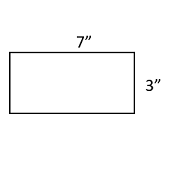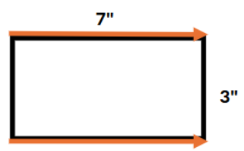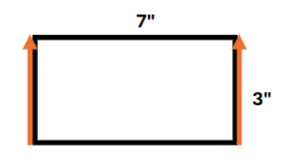The NWEA MAP Growth Test for 3rd Grade marks a key milestone as students shift into deeper reading comprehension and multi-step math reasoning. I’m Ariav Schlesinger, offering clear guidance to help families understand what this grade level demands.
This page offers:
- Free 3rd Grade MAP sample questions
- Explanations for every item
- A simple overview of the skills assessed
- Study tips and FAQs for parents
Explore free questions now and see how our practice pack builds confidence and strong learning habits.
3rd Grade Free Sample Questions
MAP Math
The Math section of MAP Growth includes a variety of question types, such as word problems, number sentences, and visual items with shapes, charts, or graphs. It measures how well students understand mathematical concepts and apply them in real-world situations.
Here are the main areas your child will see on the test:
- Number Sense: Understanding how numbers work in everyday life (for example, dividing a pizza into equal slices).
- Problem-Solving: Adding, subtracting, multiplying, and dividing to solve practical problems.
- Algebraic Thinking: Finding patterns and solving for missing numbers (like 5 + ? = 7).
- Geometry: Identifying, comparing, and reasoning about shapes, symmetry, and spatial properties.
- Measurement: Estimating and measuring length, area, or perimeter using tools like rulers.
- Data & Graphs: Reading charts or pictographs and explaining what the information means.
MAP Reading
The MAP Growth Reading section goes beyond checking whether students can read words on a page. It measures how well they can understand, analyze, and explain what they’ve read.
Your child will encounter three main types of questions:
- Literary Texts: Short stories, poems, or dialogues with questions about theme, plot, characters, setting, or the meaning of specific passages.
- Informational Texts: Nonfiction passages such as articles, directions, or charts where they’ll examine facts and main ideas.
- Vocabulary in Context: Words highlighted in a sentence where your child uses surrounding clues to figure out meaning.
MAP Language Usage
The MAP Growth Language Usage questions measure how well your child understands the rules of English and how they use language to communicate clearly and effectively. This section focuses on both mechanics (the rules) and expression (the creativity of writing).
Your child will see questions in these areas:
- Language Mechanics: Correct capitalization, punctuation, and spelling.
- Parts of Speech: Using the correct verb tense, pronoun, or word in a sentence.
- Sentence Structure and Usage: Building clear and meaningful sentences.
- Writing Process: Organizing and developing ideas for different purposes, such as opinion, narrative, or informative writing.
Understanding Your 3rd Grader’s MAP Growth Scores
After the MAP Growth test, you’ll receive a Family Report.
Your child’s MAP Growth results are much more than a score on a test. They give a clear picture of how your 3rd grader is learning and growing, and they help teachers decide what kind of support or enrichment will benefit your child most. For 3rd graders, this is especially important, as the results highlight strengths and pinpoint areas to practice in reading, math, and language. These core skills are the basis for success in the upper grades, giving you and your child’s teacher a roadmap for steady progress and confidence moving forward.
What Is on Your 3rd Grader’s MAP Growth Report
Your child’s report gives a few key pieces of information:
RIT Score
Shows your child’s current learning level on a scale that works the same for all grades. In 3rd grade, this can highlight readiness for things like longer reading passages, multi-step math problems, or stronger grammar and writing.
Percentile Ranks
Show how your child compares to other students. You may see comparisons to their class, grade, district, or even the whole country. For example, if your child is in the 65th percentile nationally, it means they scored higher than about 65% of 3rd graders across the country.
Growth Norms
Show how your child’s progress compares to other students who started at a similar level. This helps teachers see if your child is learning at the expected pace, faster, or may need extra support.
Projected Proficiency
Gives an estimate of how your child might do on future state tests or in later grades, helping teachers plan ahead.
This result helps you and your child's teacher see their strengths, pinpoint areas for practice, and ensure they are building a strong foundation for the years ahead.
For a more detailed review of MAP Growth scores, visit our MAP Test Scores page.
How Can Parents Help at Home?
- Focus on Effort, Not Just Scores: Encourage your child to see learning as a process. Praise persistence, problem-solving, and trying new strategies, even more than the result.
- Read Together Every Day: Whether it’s a chapter book, a favorite story, comics, or even an article about something your child is curious about, daily reading strengthens vocabulary, comprehension, and a love of learning.
- Ask About What Your Child is Learning: Simple questions like “What was the most interesting thing you read today?” or “Can you show me how you solved that math problem?” help your child reflect and explain their thinking.
- Celebrate Curiosity and Questions: When your child asks “why” or “how,” treat it as a chance to explore together. Curiosity is one of the strongest drivers of growth.
Preparing Your Child for 3rd Grade Success with our MAP Test Prep Pack
Our MAP Test PrepPack is designed to turn test preparation into a positive and engaging learning experience. It helps children build genuine skills and feel ready for test day by offering practice that goes beyond just answering questions.
Here’s what our prep pack includes:
- Full-Length Practice Tests: These tests mirror the official MAP exam's length and structure, helping your child build the stamina needed for 45-60 minutes of testing per subject.
- Step-by-Step Practice Quizzes: With six quizzes per subject at three levels of difficulty, your child can gradually build their skills and confidence, starting with simpler material and progressing to more challenging content.
- Interactive Number Masters Game: This game reinforces important calculation skills in a fun and interactive way.
- Study Guide and Parent Information Guide: The study guide shows your child how to approach questions step by step, while the parent guide helps you understand the test structure and how to best support your child's learning journey.
By using this PrepPack, students can enter the MAP test with stronger reading, math, and language skills, and most importantly, with increased confidence. The combination of practice, guidance, and the interactive game works together to help 3rd graders show their true abilities, setting them up for success in the classroom and beyond.
Ask Ariav

Ariav Schlesinger is a certified teacher with a Master’s in Education and a MAP Growth specialist with over a decade of experience developing 3rd Grade MAP-aligned questions. His materials include clear explanations that strengthen reading and math understanding, build reasoning skills, and help 3rd graders gain confidence and perform their best on the MAP Growth test.
FAQs About the MAP Test Prep for 3rd Grade
In 3rd grade, the MAP test introduces longer reading passages, multi-step math problems, and more challenging vocabulary. Our prep pack helps kids adjust with practice that mirrors the test format, so nothing feels unfamiliar on test day.
MAP scores often influence classroom placement, enrichment opportunities, and which areas teachers focus on for growth. Preparation helps your child approach the test calmly, reduces
anxiety, and ensures they can demonstrate what they know. Even a few weeks of practice can make a big difference in confidence and scores.
The MAP Reading section measures comprehension, vocabulary, and interpreting informational texts. The Math section covers operations, fractions, measurement, and word problems. Our prep pack includes 100’s of practice questions across reading and math to target exactly these skills.
Your child gets:
- 15+ quizzes with three levels of difficulty.
- Full-length MAP simulations designed to feel like the real exam.
- A PDF study guide with strategies and explanations.
- “Number Masters” game to sharpen calculation skills.
- Score reports after each test, showing strengths, weaknesses, and strategies.
The pack is flexible so you can let your child work independently or guide them through short sessions. Parents can track progress through detailed score reports, making it easy to spot where extra support is needed.
We suggest beginning 4 to 8 weeks before the test for the best results. However, take as many weeks as possible of steady practice so it helps your child get comfortable with the format and material. Short, consistent sessions keep practice stress-free and effective.
Yes. Since the MAP test is adaptive, we include practice questions at varying difficulty levels. Whether your child needs reinforcement or an extra challenge, the pack provides practice that reflects the range of MAP questions they may see.





